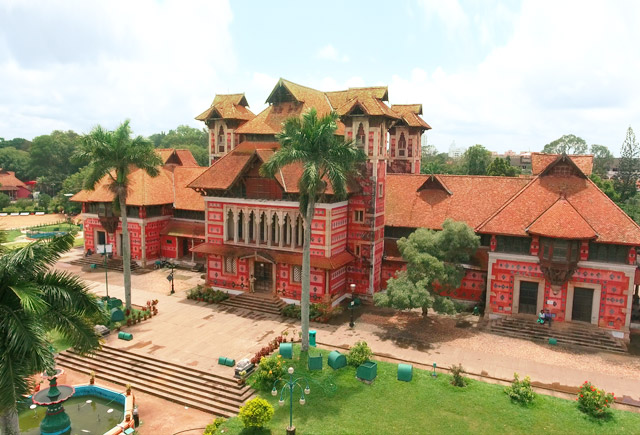

The very idea of a Museum in Travancore was the brain child of the erstwhile King, Uthram Thirunal. The Museum in its current form was started in the year 1855 by him. In order to build the museum a society was formed in the same year with Sri Uthram Thirunal as Patron, the British Resident General Cullen as President, Elaya Raja as Vice-President, and J. A. Brown, the then Director of the Trivandrum Observatory as Secretary and Director. The Museum was opened to the public in 1857 CE.
This old museum established by Sri Uthram Thirunal, was demolished during the reign of Ayilyam Thirunal as it was not large enough to display the immense collection of artifacts and therefore the present Napier Museum was built. The main motto behind the formation was to provide instruction and encouragement in arts and crafts exhibiting specimens of interest in natural history and products of art and industry, both native and foreign.

The Museum is named after Lord Napier, the then Governor General of Madras. Impressed by the traditional Kerala style architecture, Lord Napier in 1872 CE assigned, the architect of the Government of Madras, Robert Fellowes Chisholm, to build this royal structure. Chisholm attempted to promote native art in the design of the structure. He designed it after making a detailed study of Kerala architecture. He found himself in the bizarre position of having to educate and teach the Travancore elite on how best to promote and widen their own art. Within a short span of time, Chisholm came up with an idiosyncratic design, collaborating the native and the foreign. He thereby introduced the Indo-Saracenic structure to the people of Kerala. In 20/03/1873, laid the foundation stone for the new building and in 1880, the then King of Travancore, Ayilyam Thirunal opened the museum to the public.